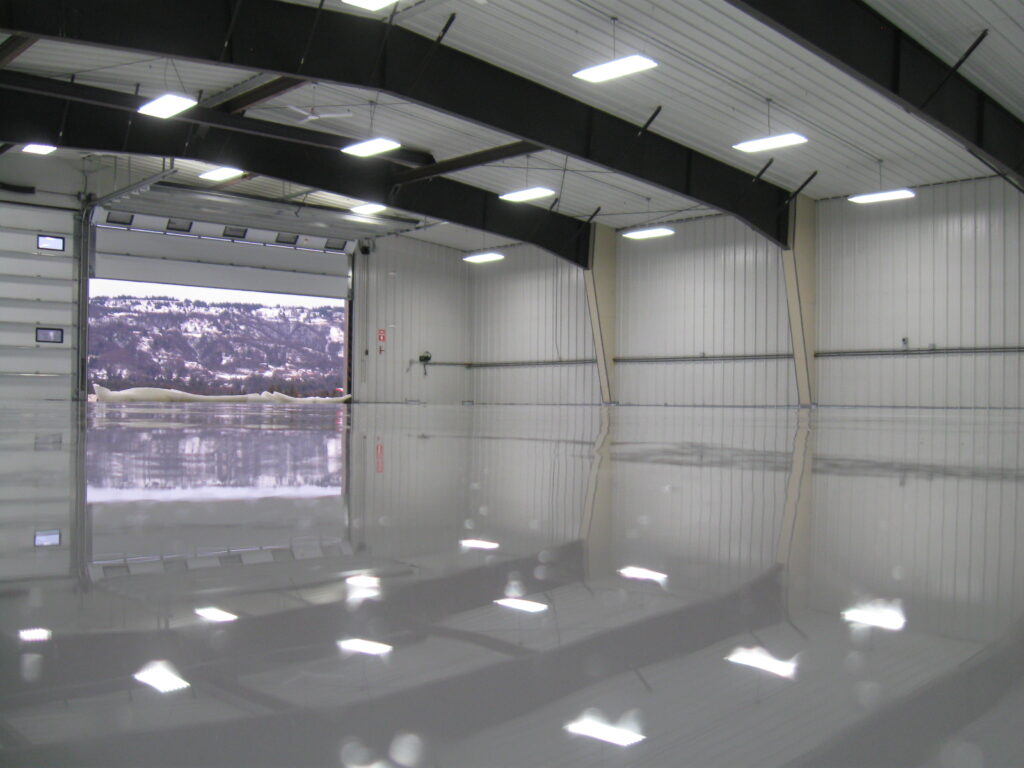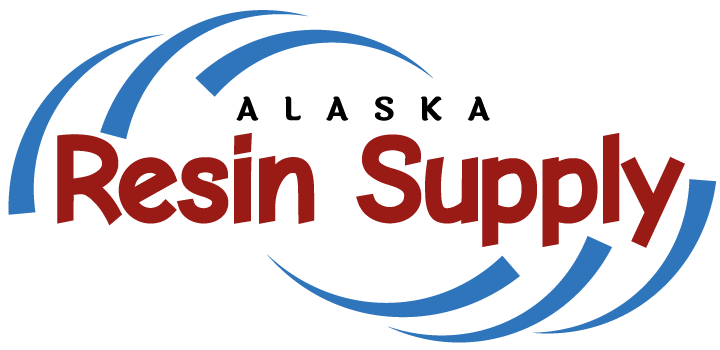It is not uncommon for businesses and homeowners to discover that some of their flooring is Gypcrete instead of standard concrete. This can leave them wondering what their flooring options are. The good news is epoxy flooring is not only compatible with gypcrete but can significantly improve your floor.

What is gypcrete?
Like concrete, gypcrete or gypsum concrete is a composite mixture of cementitious and filler materials. It’s made with a fixed ratio of sand, cement, and gypsum plaster. In normal concrete, the weight is due to aggregate. But in gypcrete, we have gypsum plaster, a lightweight material used in drywall.
In terms of application, gypcrete is often used as floor underlayment in both concrete and wooden frame constructions. It’s also used for sound reduction, radiant heating, floor leveling, and improved fire ratings. Gypcrete or gypsum concrete was first used in the radiant heat flooring industry for use with copper heating tubes, as normal concrete was far too corrosive on the copper. Gypsum is especially common in apartments, condos, and high-rises because it helps absorb sound between floors.
Gypcrete vs. Concrete
Although both gypcrete and concrete offer many benefits and have multiple applications, there are considerable differences. The most significant difference between them is their weight. Gypcrete is lightweight, weighing in around 13 pounds per square foot, while concrete weighs around 18 pounds per square foot. This not only makes it extremely easy to work with, but also makes it a popular subflooring option for most flooring applications. Multi-story buildings use gypcrete to reduce pressure on the framework.
Other common reasons that homeowners prefer gypcrete over concrete include its sound-dampening properties and fire resistance. However, concrete has many qualities that make it preferable to gypcrete.
Although both concrete and gypcrete are made with cement, their compressive strengths are different. Due to the aggregate in concrete, it offers excellent resistance against compressive forces and is stronger and more durable overall. Gypcrete is a bit softer, making it more popular as a floor underlayment, but also more vulnerable to abrasion resistance. Gypcrete can crumble into sand over time.
Concrete is the preferred choice in terms of energy efficiency and retaining heat. Though porous and not waterproof, concrete also has far superior water-resistive properties than gypcrete which can become soluble in water, potentially causing the floor’s stability to be compromised.
Essentially, gypcrete can’t be used as a finished floor, but it can serve as an underlayment for a variety of other floor coverings. In the past, these gypsum underlayments often left building owners with very few design options available. Fortunately, advancements in epoxy flooring have now made it possible to cover a gypsum-based underlayment with a stronger, beautiful epoxy floor covering.
How do I know if my floor is concrete or gypcrete?
Overall, concrete is the best choice for durable and reliable flooring when it can be used. However, gypcrete’s other various benefits mean it can be found in many homes and structures. You can check to see if your flooring is gypcrete by doing a scratch test. If you can dig a nail into the surface easily, it’s gypcrete. Concrete is much tougher.
What difference does epoxy make?
The use of epoxy can increase the structural integrity of the gypcrete. Gypcrete can come in a variety of compressive strengths. The lower the compressive strength, the heavier the application of epoxy will need to be. In Alaska, we see a range of 2800 to 3000 PSI compressive strength, which is good for almost any application of an epoxy floor.
Epoxy flooring is strong, durable, and low maintenance. Metallic pigments have a luster that other types of coloring do not have, providing a natural sheen. If a shiny surface is not desired, a matte finish can be applied as a topcoat, allowing the rich color to come through without the glossy effect. Anti-slip additives can also be incorporated for improved safety.
In epoxy, you can create color patterns to display logos or other graphics. Building owners will see added benefits of durability, minimal maintenance, and resistance to moisture, stains, and wear. Whether you’re taking on a DIY project to refinish a basement or upgrading your commercial space, epoxy flooring adds a level of refinement to your gypsum floor. It’s durable enough to withstand heavy traffic and impacts without compromising the quality of the surface.
If you have a gypcrete surface and are looking for a solution to resurface the floor, get in touch with the experts at Alaska Resin Supply. We provide the highest quality materials and have many unique coatings available for resurfacing every kind of floor and substrate. We are located at 201 E. Swanson Ave, Suite #1, in Wasilla. Give us a call at (907) 671-9900 and check out our website at www.AlaskaResin.com.
View Article on MakeASceneak.com: https://www.makeasceneak.com/april2023/2023/4/17/epoxy-coatings-can-improve-your-gypcrete-floor
